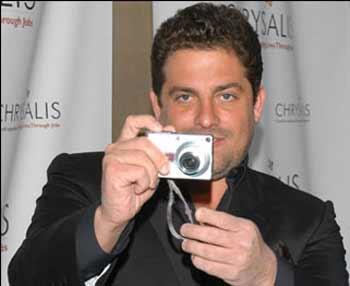Spend a few minutes watching Regis Philbin on “Live! With Regis and Kelly” and you’ll come away with some pithy anecdotes, a groan or two and a warm, easy feeling.
It’s what made the personable Philbin a morning TV fixture for decades. In “How I Got This Way,” the king of morning chat recalls both the lean years and the personalities he met while rising to the top of his profession.
 The tome, his third attempt at a quasi-memoir, seems like the perfect vehicle for such an avuncular sort. But what works on the small screen – short, amiable stories told by a master – doesn’t translate well to the printed page. It won’t take readers long before they casually put the book down and cry, in true Philbin fashion, all right … what else you got?
The tome, his third attempt at a quasi-memoir, seems like the perfect vehicle for such an avuncular sort. But what works on the small screen – short, amiable stories told by a master – doesn’t translate well to the printed page. It won’t take readers long before they casually put the book down and cry, in true Philbin fashion, all right … what else you got?
Philbin’s “Way” sounds an awful lot like one of his morning show confabs. Some sentences demand to be shouted, not read, and he circles around a topic like a storyteller temporarily lost in his own haze of words.
“Way” begins with the larger-than-life personalities who made the author want to entertain us in the first place. A young Philbin marveled at the dulcet tones of Bing Crosby and longed to be anything like the great Dean Martin. But he wasn’t quite sure what talent he possessed to catapult him to TV stardom.
It’s the kind of theme to hang an autobiography on, but soon it’s clear this “Way” is far more interested in sharing the famous folk who crossed Philbin’s path rather than dissecting his unique career.
The book’s narrative bobs and weaves to fit all the colorful players in, from gossip maestro Walter Winchell to talk show titan Jack Paar. Some stories zing, while others feel like mash notes from an uncritical fan.
Through it all we get some sense of Regis Philbin, work in progress. The TV talker realized along the way how potent conversation can be to casual viewers, and how even the smallest anecdotes could be ripe talk show fodder. But readers must endure plenty to glean that message, from several chapters trumpeting the author’s love for Notre Dame to flimsy fodder like Philbin’s ties to the late George Steinbrenner.
“Way” occasionally soars, like when he fleshes out his days serving as Joey Bishop’s sidekick. He also shrewdly recalls the cultural shift in the 1970s that paved the way for his most famous TV gig.
“It was all about balance and equality and individual points of view and so on – but the bottom line was that there would be male and female co-hosts or co-anchors on all talk and news shows, effectively immediately,” he writes.
That change led him to share the spotlight with a number of blonde bombshells, from Sarah Purcell to a pint-sized spitfire named Kelly.
Philbin lets down his guard at last for the final chapter, one dedicated to his wife, Joy. The author pours his heart out for his longtime squeeze, a rare moment direct from the heart.
Gossip hungry readers won’t find so much as a scrap of tabloid fodder here. Philbin has a nice word to share about most of the people in his life, even the famously dour Joe DiMaggio. Philbin recalls a near perfect relationship with his former TV partner, Kathie Lee Gifford, and given the latter’s penchant for self-promotion that seems like a stretch. Perhaps it’s all part of Philbin’s ability to forgive past mistakes and simply look to the next adventure.
Surely Philbin has something more to share about his famous New York neighbor, radio’s own Howard Stern, than what appears here. What did Philbin think of Stern routinely attacking him for allegedly failing to emotionally support his physically challenged son?
Yet the author still smarts over a botched cameo he did on “Seinfeld,” one where the show’s creative team forced some clunky dialogue on him that he knew would kill the moment.
He was right.
Philbin’s entertainment sense rarely let him down, but in “How I Got This Way” it gets lost in the shuffle of famous pals, past and present.
COMMENTS
Please let us know if you're having issues with commenting.